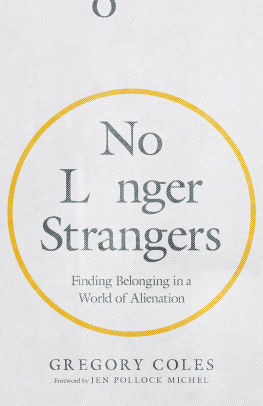Copyright 2016 Houghton Mifflin Harcourt Publishing Company
All rights reserved
www.hmhco.com
cliffsnotes.com
No part of this work may be reproduced or transmitted in any form or by any means, electronic or mechanical, including photocopying and recording, or by any information storage or retrieval system without the prior written permission of Houghton Mifflin Harcourt Publishing Company unless such copying is expressly permitted by federal copyright law. Address inquiries to trade.permissions@hmhco.com or to Permissions, Houghton Mifflin Harcourt Publishing Company, 3 Park Avenue, 19th Floor, New York, New York 10016.
The publisher and the author make no representations or warranties with respect to the accuracy or completeness of the contents of this work and specifically disclaim all warranties, including without limitation warranties of fitness for a particular purpose. No warranty may be created or extended by sales or promotional materials. The advice and strategies contained herein may not be suitable for every situation. This work is sold with the understanding that the publisher is not engaged in rendering legal, accounting, or other professional services. If professional assistance is required, the services of a competent professional person should be sought. Neither the publisher nor the author shall be liable for damages arising here from. The fact that an organization or Website is referred to in this work as a citation and/or a potential source of further information does not mean that the author or the publisher endorses the information the organization or Website may provide or recommendations it may make. Further, readers should be aware that Internet Websites listed in this work may have changed or disappeared between when this work was written and when it is read.
Trademarks: CliffsNotes, the CliffsNotes logo, Cliffs, cliffsnotes.com, and all related trademarks, logos, and trade dress are trademarks or registered trademarks of Houghton Mifflin Harcourt Publishing Company. All other trademarks are the property of their respective owners. Houghton is not associated with any product or vendor mentioned in this book.
Library of Congress Cataloging-in-Publication data is available.
eISBN 978-0-544-64803-6
v1.1015
At-a-Glance
Anthony Doerrs All the Light We Cannot See tells the story of two teenagers during World War II (WWII), one a blind girl in Nazi-occupied France, the other a German orphan boy pressed into service by the Nazi army.
Marie-Laure LeBlanc evacuates Paris with her father after he is entrusted with a valuable diamond named the Sea of Flames. They escape to her great-uncle Etiennes house in Saint-Malo, where her father is arrested. Marie-Laure becomes part of the French resistance effort. She and Etienne use his contraband radio to broadcast information to the Allies.
Meanwhile, a brilliant German boy named Werner Pfennig seems doomed to spend his life in a coal minebut instead receives an invitation to a Nazi school. Leaving behind his sister, Werner sacrifices everything he believes in to pursue his dream of becoming a scientist. Werner is pressed into military service and becomes part of a team assigned with the mission of locating and destroying anti-German radio broadcasts.
While Werner is in Saint-Malo hunting Marie-Laures radio broadcasts, Allied bombers attack the city. In separate locations, both Werner and Marie-Laure are trapped. Eventually Marie-Laures broadcasts save Werners life, and in return, he finds her and saves her from a German officer who is prepared to kill her in his search for the Sea of Flames diamond.
Written by: Anthony Doerr
Type of Work: Fiction
Genre: WWII fiction
First Published: 2014
Setting (primary): Saint-Malo, France
Settings (secondary): Paris, France; Zollverein, Germany; Schulpforta, Germany; Berlin, Germany
Main Characters: Marie-Laure LeBlanc, Werner Pfennig, Daniel LeBlanc, Etienne LeBlanc, Madame Manec, Jutta Pfennig (Wette), Frau Elena, Frank Volkheimer, Frederick, Dr. Hauptmann, Reinhold von Rumpel, Madame Ruelle
Major Thematic Topics: The tragedy of war; worlds within worlds; free will and predetermination; moral relativism; the power of the invisible realm; the significance of seemingly insignificant actions
Major Symbols: Radios; music, especially Clair de Lune by Debussy; shells; locks and keys; the Sea of Flames diamond; Jules Verne adventure novels
The three most important aspects ofAll the Light We Cannot See: First, the novel is an exploration of the tragedy of war. Characters full of promise are transformed in heartbreaking ways by the violence around them. Werner, bright and inquisitive, dreams of becoming a scientist; instead, he is given a choice between working in a coal mine or dedicating his life to the Nazi cause. Frederick, whose sense of duty brings him to the Nazi school despite his compassion, refuses to participate in killing a helpless man. Later, he is singled out for punishment and beaten so severely that his mind is permanently damaged. Marie-Laure, Etienne, and Jutta all lose someone close to them because of war and are forever scarred as a result. In addition to reflecting wars horror through individual stories, the novel also offers glimpses into the larger-scale horrors of WWII. Civilians are killed mistakenly, women are raped, and prisoners are mistreated and murdered. Although the Holocaust is never mentioned directly, it is occasionally alluded to, creating an inescapable backdrop to the story.
Second, and closely related to the first aspect, the novel questions how much power human beings have to choose their own destinies, and to what degree our lives are predetermined by the world around us. On one hand, war makes certain kinds of personal choices impossible. As Frederick tells Werner, Your problem is that you still believe you own your life. On the other hand, Doerrs novel emphasizes the power of individuals to choose their own path despite the world around them. In one of the books most important scenes, Werner tells Marie-Laure that she has been brave. She says, I wake up and live my life. Dont you do the same? Werner answers, Not in years. But today. Today maybe I did. Although Marie-Laure denies her own free will, Werners response emphasizes that she has been fighting for the resistance, refusing the easy path Werner has largely taken up until this point.
Finally, as Werners conversation with Marie-Laure shows, All the Light We Cannot See calls attention to the shared humanity that bridges our differences and the artificiality of dividing lines between good guys and bad guys. One of Werners fellow soldiers calls attention to the artificiality of ethnic division when he jokes, The true Aryan is as blond as Hitler, as slim as Gring, and as tall as Goebbels, citing examples of leading Nazi figures who did not fit the Aryan stereotype. Marie-Laure and Werners bond is perhaps the best example of common humanity. Even though they are strangers on opposite sides of the war effort, they are kindred spirits nonetheless.
Book Summary
All the Light We Cannot See covers five primary periods in the lives of Marie-Laure LeBlanc and Werner Pfennig:
1. Childhood Before the War
Marie-Laure lives in Paris with her father, a locksmith for the Museum of Natural History. She goes blind because of cataracts, and he helps her cope with blindness by buying her Jules Verne adventure novels written in Braille and by building her a wooden replica of their neighborhood so she can learn to navigate it blind. As rumors of German occupation grow, the museum entrusts Marie-Laures father with a valuable diamond named the Sea of Flames. He and Marie-Laure evacuate Paris to deliver the stone to a friend of the museum.
Next page














